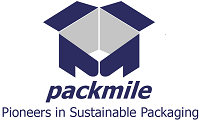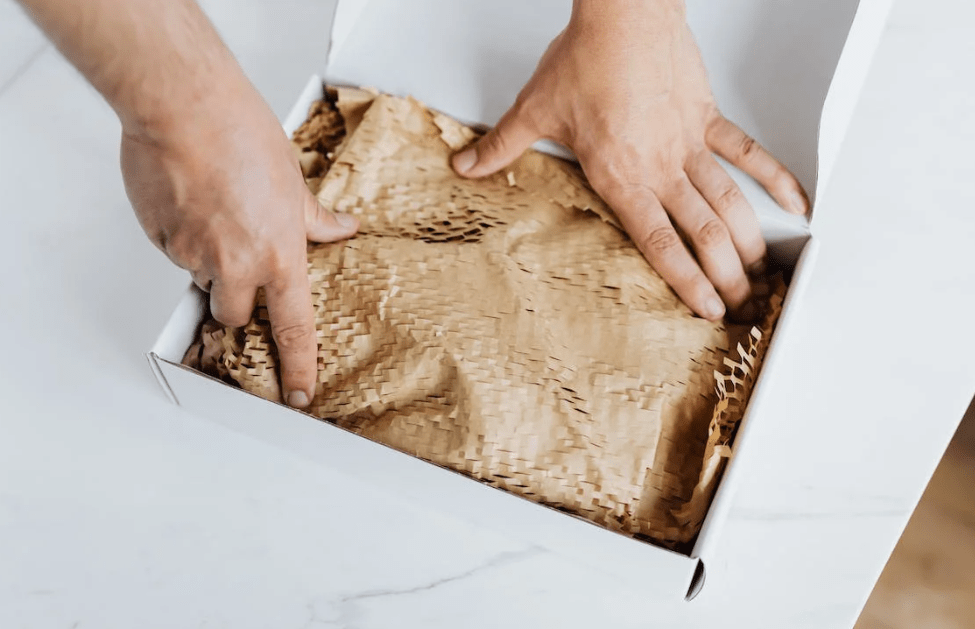One of the most popular types of protective packaging on the market is void fill. Companies from all over the globe use one or more of the numerous varieties of void fill to preserve their products along the whole supply chain procedure, from small home-based businesses to the shipping hubs of large multinationals.
Safer shipping practices and reduced content damage from sudden movements can be achieved using protective packing and void fill. Depending on the item you’re shipping, the method you’re transporting it, and any other unique shipping considerations, you may choose to use protective packaging, void fill, or a combination of the two.
The packaging process of the products needs more research and careful selection. From a business perspective, packaging plays an important role in reducing product damage and ultimately minimizing the cost of packaging. In this blog, we will discuss how to get the right sustainable packaging material, specifically void fillers.
How is Sustainable Packaging Creating Demand for Eco-friendly Void Fillers?
With the constantly changing environmental conditions and increasing consumer awareness, the demand for various sustainable and eco-friendly products has increased in the past few years. Businesses are becoming more conscious about what raw materials they use since it dramatically impacts their image in the market.
The high penetration of the internet has contributed heavily to the e-commerce market, and now people are getting used to getting all their products delivered to their homes. This is creating more demand for eco-friendly packaging materials. Void fillers are among them, and they are used to fill all the left areas in a package to add an additional layer of protection to the products considered fragile.
Sustainable packaging uses less waste, encourages recycling and composting, and uses renewable, biodegradable, or recyclable materials to reduce the harmful environmental effects of packaging materials. Eco-friendly void fillers are increasingly needed to support sustainable packaging initiatives as more companies embrace them.
In short, the need for eco-friendly void fillers is being driven by sustainable packaging as companies explore ways to lessen their environmental effect and satisfy the growing customer demand for sustainable products. By implementing eco-friendly void fillers, businesses can cut waste, promote sustainable development, and appeal to customers who care about the environment.
Why Do Companies Need Void Fillers?
There are many aspects of why companies actually need void fillers. But, the foremost reason for using these void fillers is to add a protective layer between the box and the product. When shipped, products are often subjected to rough handling, jostling, and vibrations that can cause damage. Void fillers help prevent this damage by filling empty spaces inside packages, ensuring that the products are held securely in place and cannot move around during transit.
Using void fillers can also help to reduce the risk of product returns and damage claims, which can be costly for companies. By ensuring that products arrive at their destination in good condition, companies can reduce the likelihood of returns or claims, which can help to protect their bottom line.
Void fillers come in various materials and forms, including foam peanuts, bubble wrap, air pillows, paper, and more. Companies can choose the type of void filler that best suits their products and shipping needs based on product fragility, weight, and destination.
Types of Void Fillers
Void fillers come in different shapes, sizes, and forms like shredded paper, corm, and packing peanuts, from which you can choose the best-suited void filler for your product packaging. These void fillers are sustainable as well as cost-effective for businesses. Here are some of the key types of void fillers that you can find in the market:
1) Packing Peanuts
They are small and staticky peanut-shaped fillers, which are made of expanded plastic that has been injected with air. Although they are lightweight and cost-effective and do an excellent job filling space, their use can increase shipping costs due to their weight. Furthermore, as a manufacturer or retailer, you would need to allocate a significant amount of space in your warehouse or shipping area to store them.
2) Paper
Paper is commonly used as a type of void filler, which is popular and possibly the easiest for using void fill material. Just crumple it up or shred it, then put it within the box. For further security, you could also cover small items with sheets of paper. Although it is typically a natural brown colour, paper is available in numerous designs. It is one of the most traditional forms of void filling, which is cheaper, eco-friendly, and effective.
3) Shredded Papers
Packaging, recycled paper, and cardboard improve the aesthetics, particularly if you aim for an organic, eco-friendly vibe. They have the advantage that they can be recyclable or reused, so they’re also a cost-effective choice. Shredded material works well for nesting and packing the products to maintain them shockproof throughout transit. Companies are increasingly adopting them since they are a cheaper and more effective void filling.
4) Paper Bubble Wrap
Bubble wrap has always been the top choice as a void filler. But with the growing popularity of sustainability and eco-friendly packaging concept, the production and demand for paper bubble wrap have increased heavily in the market. Most companies are using these paper bubble wraps to introduce themselves as sustainable brands.
Paper bubble wrap is a practical choice for packaging and shipping goods of various shapes and sizes since it is flexible, lightweight, and simple to use. It may be readily torn or cut to fit the product’s precise shape, ensuring that it fills any voids in the container and offers the greatest level of protection during the shipping process.
5 Tips to Get the Correct Void Fillers For Your Product Packaging
It is important for businesses to select the right packaging material for their product packaging stage. With proper research and analysis, you can find out what material would help you in protecting your product packages during transit.
1) Choose the right size
When selecting the most effective and correct void fillers, the most important aspect to consider is the size of the void filler. Even though they might not require any empty fill, items neatly fitting into a box or mailer can be a better option. Yet, it may be necessary to use protective packaging and void fill to plug gaps around objects with odd forms or spaces between the box and its contents.
2) Shape matters!
The shape of the void fillers determines the level of security of the product. It is important to know what shape of the void filler will provide better product protection. Different sizes of void fillers are available in the market, which makes it more important to focus on this aspect. It won’t be wrong to say that the size of the packaging box is among the lead reasons in determining the void filler’s size.
3) Consider the fragility level of your products
During the packaging process, it is important to know about your products thoroughly and then pick the best packaging material that covers them up and increases their shelf life by creating a protective layer around the product. So, if your product is fragile and is more prone to break, you should choose void fillers that cushion it properly during any movement.
4) Shipping method
To prevent movement and damage while delivery, items sent to consumers directly would require little protective packing or paper void fill. Long-distance shipments, though, could necessitate additional packing to safeguard the contents from common jolts and drops in vehicles like cars, planes, and ships. It is important to pick the most reliable void filler, which can actually prevent major damage to the products when they travel long distances.
5) Number of products packaged in a box
When packaging a single product or a bunch of it for shipment, you need to pick the right packaging void filler in order to protect them. In case when you package multiple items, you need more cushioning and dividers to ensure they won’t collide and break. For businesses, it is important to make clever decisions while packaging since it impacts them in different ways. Thus, determine whether you want to pack a single product or multiple items simultaneously, ultimately impacting your packaging material choice.
To Summarize
Sustainable void fillers are an ethical and sensible option for companies wishing to lessen their environmental impact and guarantee the security of their goods during shipping. Businesses can select the best eco-friendly void-fill material for their unique requirements and financial constraints from various options available.
Companies can use sustainable void fillers to lower their carbon footprint, enhance brand recognition, and attract customers who care about the environment. Using eco-friendly void fillers can also aid in lowering trash disposal and product returns owing to transportation damage-related costs.
Businesses may significantly contribute to promoting cleaner and greener earth for future generations by adding sustainable void fillers into their packaging and shipping strategies. If you are confused about where to buy these eco-friendly, sustainable, and cost-effective packaging materials, then Packmile is the right place for you! Packmile’s latest product Corm is a saviour for all kinds of void-filling requirements. Our team of experts helps you in selecting the best packaging type and material so that you don’t need to incur damage losses. Contact us today for a professional consultant.






Leave A Comment